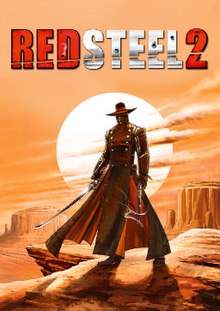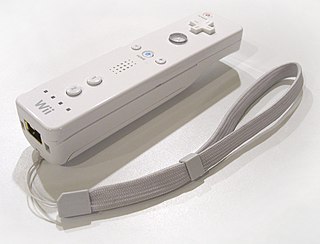Story
The game begins as an unnamed Hero, the last member of the Kusagari Clan, is being dragged across the desert, tied to the back of a motorcycle. He manages to break free, but Payne, the leader of the Jackals – a vast gang of thugs, murderers and thieves – steals the Hero's katana. While running from the Jackals with only his trusty .357 Longarm through the city of Caldera, the Hero rescues his old swordsmaster Jian who was to soon be executed by the Jackals. After the rescue, Jian allows the Hero to borrow his sword until the Hero can recover his own from Payne.
The Hero meets up with Tamiko, a member of his clan's research division, as well as Caldera's sheriff and Tamiko's father, Judd. They provide information for the Hero to help him track down Payne, while sabotaging the Jackals' operations in the Upper City, as well as meeting a fight club-operating businessman named Songan. The Hero eventually locates and defeats Payne in the Jackals' hideout, Rojo House, recovering his katana during the battle. He interrogates Payne and, before killing him by throwing him off a ledge, learns that his entire clan had been annihilated by a man named Shinjiro.
The Hero travels to the Lower City, encountering another rival clan called the Katakara. He finds Shinjiro in the city's Kusagari Temple and the two swordsmen fight. After a fierce battle, the Hero breaks Shinjiro's katana and pushes him to the edge of the Temple's roof. However, before the Hero can strike his foe down, a mysterious ninja saves Shinjiro. Jian then tells the Hero that the katanas of the Kusagari, called Sora Katanas, have great unpredictable power and that the method to make these is known only to them, and Shinjiro, who trained with the Kusagari as a child, plans to make more of them.
Following a tip from Judd, the Hero discovers Shinjiro trying to escape the city on a train and manages to board it before it leaves. After the Hero fights his way through the train, which is full of ninjas and Katakara, he finds Shinjiro atop the front car; the "escape attempt" is revealed to be a trap. As the Hero approaches the front car, Shinjiro detaches the front car from the rest of the train. Shinjiro then throws a grenade to kill the Hero and destroy the rest of the train. The Hero survives, but is forced to walk through the desert for three days before finding a small ghost town. While exploring the town, the Hero discovers Songan, who explains that the ghost town is a Jackal ammo dump. The Hero drives off the Jackals and survives an attack by a Katakara force, led by the lieutenant Calhoun.
After reestablishing communications with Tamiko, Judd, and Jian, the Hero learns that the trio have tracked Shinjiro to the isolated mining community of Rattlesnake Canyon. The Hero then takes Songan's advice and uses an old locomotive in the town's deserted train depot to travel there and is nearly killed when Shinjiro blows up a bridge up ahead. While exploring the Canyon, the Hero is attacked by the leader of the Katakara, Okaji, but manages to defeat him, only for him to return from the dead. Following Tamiko's plan, the Hero then uses explosives stolen from the mining quarry to break into the Canyon's Kusagari Temple, taken over by Shinjiro. This temple has a passageway leading to one of Songan's casinos and a pulley-raised bridge to Shinjiro's hideout, Tiger's Nest. Just as the Hero is about to ask Songan about how to get into Tiger's Nest, he then betrays the Hero and his allies, Tamiko, Judd, and Jian, are captured, but Songan nevertheless helps him lower the bridge. At Tiger's Nest, Shinjiro demands the Hero's katana in exchange for his friends. As the Hero is about to give it to him, the two engage in a gun duel, where Tamiko is shot.
The Hero chases Shinjiro through Tiger's Nest and eventually engages in a rematch with Okaji, whom he finally kills by dropping him off a cliff. He then hunts Shinjiro on a remote mountain outside the Nest, who then taunts the Hero about how the capture of his allies helped him rebuild his sword and uses explosives and henchmen in one final effort to stop the Hero from reaching him. When that fails, Shinjiro, now adorned in menacing armor, draws out a newly forged katana for a final showdown with the Hero atop a high cliff. The Hero bests him in the intense, ensuing duel, but a wounded Shinjiro warns him that other clans will covet the power of the Sora Katana before the Hero tells him that history will forget him and finishes him off by stabbing him in the heart. As Shinjiro perishes, the Hero breaks the sword in two and tosses the hilt end off the cliff in an effort to deter the clans from learning more about this weapon, before looking on to see the sun rise.
















